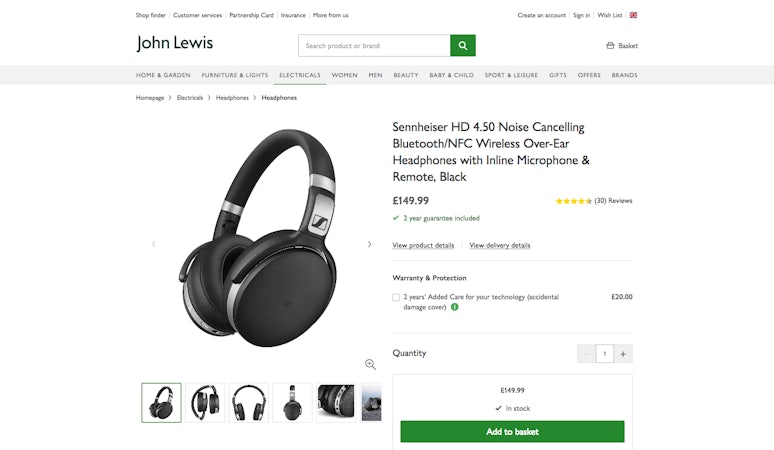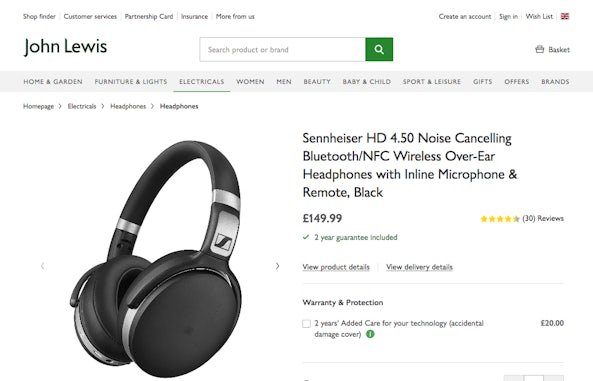User intent is a pretty hot topic in the SEO industry as of late. Not only has it been a staple part of successful content strategies for the past few years, thanks to key algorithm changes in how Google parses content, but additional clarification from Google about how it interprets user intents from search queries has led to a far more sophisticated model of the process.
User intent through search has been broken down into 4 main categories, with a few sub-categories nested in there.
- Know Query, which can be determined as a Know Simple query.
Users are seeking an answer to a question they have or for additional information on something they’re interested in.
- Do query, which can be determined as a Device Action query.
Users are seeking to complete an action or actively do something specific through search, such as a product purchase.
- Website query.
Where the user is seeking a specific website or webpage.
- Visit-in-person query.
Users are seeking for a location, business or organisation, or for a selection of businesses from a particular niche – restaurants, for example.
I think that the motifs behind user intent have been well-established at this point – Know, Know Simple, Do, Device Action, Website and Visit-in-person – so I won’t be going into explicit detail behind what each of these intents signify. Rather, I’m going to discuss how we can leverage the power of user intent and our understanding of these query definitions to amplify click-through rates and conversion rates on your website.
User Intent & the Power of Content
So, whenever a search query is performed, it is going to have an intent attached. Even though the user isn’t thinking about this directly, that’s how Google sees it. Every search seeks a resolution, and it’s a search engine’s job to find the best path to meet that expectation. We as SEOs should be thinking about this ideology and building our content strategies accordingly.
Whether you’re optimising key service pages, writing an educational blog, creating ad copy for paid advertising purposes, or engaging with users through social media, you’ll want to be using user intent as a metric to craft success. It’s surprisingly easy to bring this into your typical research phase, and once you’re past the setup stage, you’ll quickly begin to visualise the content map/keyword map and it’s relation to the site overall.
To get you targeting the right terms, you’ll want to conduct some thorough keyword research and attach an intent to each keyword you create. For example, let’s use the query [Sennheiser headphones]. This is a broad keyword with a search volume of 14,800/month, and it has no explicit intent attached to the keywords themselves at first glance.
Let’s note a few things about this phrase:
It’s more specific than it appears
Although it is a short-tail keyword, the user is searching for a specific thing (headphones) and they’re looking for a specific brand (Sennheiser). This shows that they’re not at the very start of their journey and are diving deeper into their research.
It asks a question about a product
Most queries pertaining to a product are going to typically be categorised as a Do or Device Action search query, unless they’re searching for reviews about the product, for example. In that case, you’d expect to see something closer to [Sennheiser headphones review], or perhaps a reference to a specific model in the query.
The current SERP ranks numerous ecommerce sites highly
The SERP data can help to inform you on how Google sees the query, which will essentially tell you how you should be looking at it. Google clearly believes that users are looking to buy a pair of Sennheiser headphones and is showing organic results to meet that intent.
From these assessments, we can confidently say that [Sennheiser headphones] can be categorised as a Do query, and the deeper intent behind the search would be for the user to purchase some Sennheiser-branded headphones. This is a longer process than you’ll need to take with most keywords, but definitely take the extra time to nail down less obvious intents. Once you’ve got that all sorted, you can begin to optimise.
Maximising the User Journey
The first point of contact for potential users is the SERP itself. You’ve decided on a search term – or number of terms – you’re going to be targeting on a specific page, and you’ve mapped each term to an intent. The SERP is the first place you can influence their user journey for your benefit, and building your organic listing to meet these intents will make the most of that visibility.
For example, you’re working with an e-commerce site that sells trendy audio products (how coincidental, right?) You’ve established that core search terms you’re aiming for trend towards Do queries, as users you’re primarily interested in are looking to buy some headphones.
Craft your metadata to meet the demands of the page you’ve mapped out. Taking our user who has searched [Sennheiser headphones] and is browsing through, let’s look at two potential meta descriptions and see which has been designed to meet user intent.


This is a bit extreme, but the idea is there. The top result shows clear guidance for the search intent, adds a qualification that could sway the buyer (free delivery) and matches the search query well. The second is not focused sufficiently, has a description that’s probably been pulled from the on-page content, and doesn’t match up to the user’s intent well enough.
Following this ideology for your on-page content will have a similar impact, and your chances of converting will increase as a result. Write content to meet the needs of your user and consider the intent behind their search at all times.
Seal the Deal On the Page
Once you’ve got that click, you need to make sure users are given every opportunity to complete their intent. Whether this is the timely delivery of the right content, or the adjustment of on-page elements to make it easier to achieve their goal, you need to cover all angles to really maximise your chances of converting.
When it comes to on-page content, you must keep it succinct, relevant and informative to the target queries you’ve mapped. If someone searched [difference between in ear and over ear headphones], then your content will need to be purely informational and should answer their query; perhaps there’s an opportunity to put inlinks to in-ear and over-ear category pages at the end – once you’ve fulfilled their intent sufficiently. It’s important to always put the user first, so don’t try and force them further down a sales funnel if their not ready to convert.
As a small additional note, crafting high-quality on-page content will help to ensure that even when Google opts to pull your meta description directly from the page content itself – a trend that’s becoming increasingly common – you’ll still have a well-optimised SERP listing compared to others.
Using User Intent to Optimise Conversion Rates
So, with the above in mind, if we use the same model of user intent to improve the user experience of a given page, we can have a decided impact on how well a page is going to convert. Conversion rate optimisation (CRO) aims to increase the rate at which users complete desired actions on your website, usually on a page-specific level, leading to increased site success. When done correctly, it can be one of the most potent tools in your arsenal to influence user behaviour and conversion rates – certainly not to be ignored!
UX for Your Users
You want users to convert on your site – a product purchase, for example – and you’re already optimising your SERP and on-page content for the user intents you’ve assessed previously, now is the time to optimise the page itself to enhance conversion rates. This involves taking an objective look at your site and making tough decisions to change how it operates. How can we go about doing this in a logical, data-driven manner that will have a positive impact?
I often see stagnant sites because in-house teams are too comfortable with how their site functions, meaning they can’t grasp the true experience a user is having. I cannot stress enough how important it is to take a step back and gather genuine data on your site’s performance.
Gather your data
Pull behavioural metrics from Analytics for the pages you are planning to optimise to serve as both an initial data point for any issues – particularly high exit or bounce rates, low time-on-site – and as a historical data point to measure future analysis against. In addition, consider more granular analysis through tools such as heatmap or user recording software. These will help you to see exactly how users are engaging with elements of your page and will serve as an important asset moving forward.
Let’s continue with our headphone ecommerce website as before and take a look at an example of solid user experiences in relation to the user’s intent.

John Lewis have a clean design, with a simple yet strong colour scheme to highlight (most) key points of information a user will be searching for. It’s easy to see at a glance that this is a highly-rated product, that there is a 2 year guarantee, and the purchase option is clear. The images are highly-visible and there is clear guidance on how to manipulate them (thumbnails, zoom icon, switch image arrows). All looks great.
If we try the site on a smaller viewport, however, things begin to get a little more muddled.

Viewing the page on a smaller screen shows a few crucial losses. Firstly, there’s no clear purchasing options, many of the image manipulation options are lost, and the header starts taking up a hefty amount of real estate. Mapping out these points can give us areas to investigate and possibly adjust, which you’ll want to validate with additional data as much as possible.
All of these assessments are based purely from my experience as a new user, and it’s possible that in-depth data proves me wrong (I’m confident John Lewis’ marketing team have gotten this down to a pretty solid science), but you can see the logic I’m using to make these assessments. If you use data to qualify and shape your analysis, you’ll quickly be able to make informed decisions that will improve your page structure for the better, which will enhance your site’s ability to convert.
Mobile Optimisation & Using Data to Dig Deeper
We’ve focused on desktop, but the process just as vital for mobile devices – even more so, in fact. Users are much quicker to leave a site that isn’t loading or is difficult to use, and as the screen real estate is so much more valuable, it’s much tougher to fulfill a complex user intent effectively.

We can see that a snapshot of this analytics account, segmented by device, gives us a better understanding of the relationship between desktop and mobile users. Despite a shorter time spent on each page, desktop users are 10% more likely to move deeper into the site after entering through a SERP, and over 5% less likely to leave the site on a given page. We can also look at this on a case-by-case basis, which can also be a useful way to analyse content success.

Above are 2 functionally identical category pages from a UX perspective, yet have different content. These make a great comparison as they both target a similar product and are receiving similar volumes of overall traffic. So what can we draw from this data?
The second category has a higher Avg. Time on Page
Sounds like a positive, we want users to engage with our content and stay on-site for as long as possible, right? Let’s dig a little deeper.
The bounce rate is much higher
Alarm bells should start ringing at this point. A nearly 30% jump in bounce rate on desktop, and a whopping 65% on mobile – there’s an issue here, that much is certain.
Piece It All Together
If we look at the volume of entrances from search engines in relation to the avg. time on page and bounce rate, we can clearly see that the top page is ranking more effectively for it’s target term and drawing more traffic (higher entrance count), the on-page content is effectively meeting user intent (low bounce rate) and they’re continuing on their journey. That means that the low avg. time on page is a positive, as users aren’t struggling to find what they searched for, getting frustrated and leaving.
We can use this data to clearly flag the second page as a target for optimisation, and can use the successes of the first page as a template for how to adjust moving forward. This also highlights just how vital it is to optimise both desktop and mobile platforms, especially as mobile traffic continues to increase.
Conclusion
User intent modeling is here to stay, and you aren’t pushing your marketing strategies to their limit if you aren’t considering this in your ongoing work. Whether it’s content or page designs that you’re focusing on, keeping a goal in mind for that page will be a key factor in ensuring you can positively influence click-through rates and conversion rates.
I’ve really only scratched the surface of what’s possible, and so much comes down to extended analysis, split-testing and multiple iterations to create a number of incremental successes. Always keep your users in mind – they drive your business, after all.



